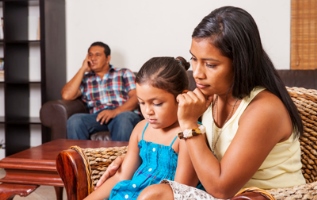 Hispanics make up about a quarter of the people in families with children who live in deep poverty in the U.S., but only 16 percent of family members who experience sheltered homelessness. Analysis of a rich set of data on Hispanic families who do use emergency shelters finds that while overall Hispanic families enter shelter less than other groups, there are striking differences between those entering shelters in different part of the U.S., with notable variation in substance misuse, recent work history, and resilience after their respective time in shelters.
Hispanics make up about a quarter of the people in families with children who live in deep poverty in the U.S., but only 16 percent of family members who experience sheltered homelessness. Analysis of a rich set of data on Hispanic families who do use emergency shelters finds that while overall Hispanic families enter shelter less than other groups, there are striking differences between those entering shelters in different part of the U.S., with notable variation in substance misuse, recent work history, and resilience after their respective time in shelters.
Overall, Hispanic families who experience sheltered homelessness in the Northeast U.S. tend to fare significantly better than those in western states following a shelter stay. Twenty months after a shelter stay, Hispanic families in western cities were twice as likely to have spent at least one night homeless or doubled up in the past 6 months, and more than four times as likely to report recent alcohol dependence or drug abuse compared with Hispanic families entering shelter in northeastern cities. Twenty months following a shelter stay, Hispanic families in western cities were also less likely to have worked for pay in the prior week than those in northeastern cities.
There are many possible explanations for this regional variation, including differences in the way the homeless services system works in different parts of the country and differences in how families in deep poverty relate to social programs. It may also be a reflection of the diversity of Hispanic/Latino communities.
Read the research brief, published for the first time by the Center for Evidence-Based Solutions to Homelessness, for a detailed exploration of these questions.
March 2018
